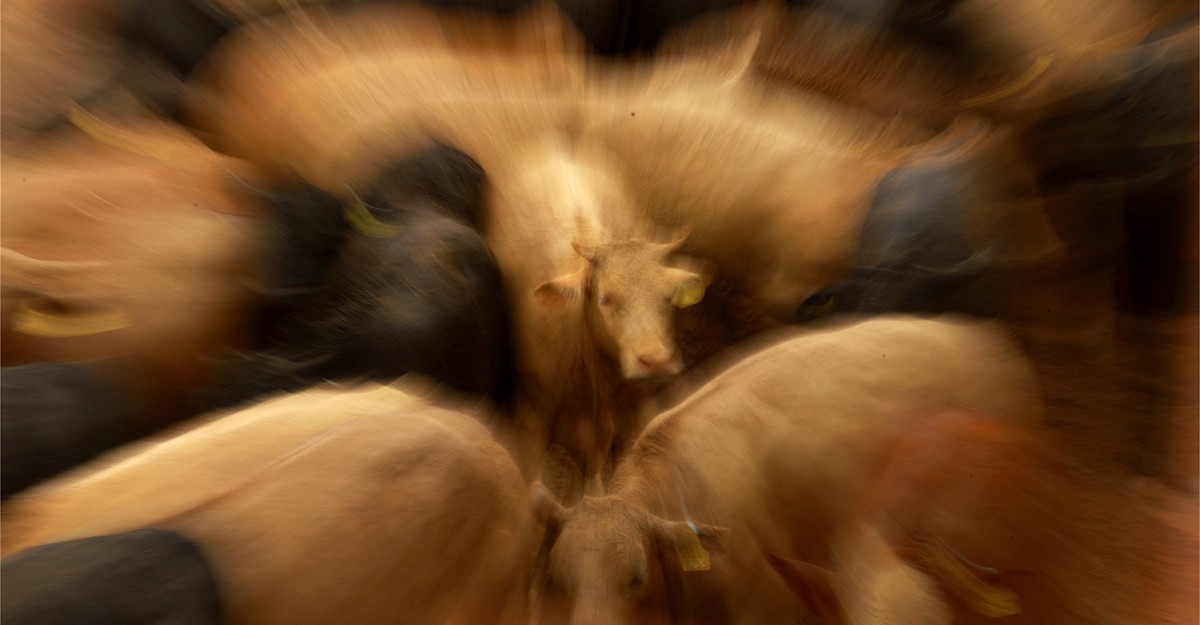Invasive Screwworm Flies: Understanding The Risks And Prevention

Welcome to your ultimate source for breaking news, trending updates, and in-depth stories from around the world. Whether it's politics, technology, entertainment, sports, or lifestyle, we bring you real-time updates that keep you informed and ahead of the curve.
Our team works tirelessly to ensure you never miss a moment. From the latest developments in global events to the most talked-about topics on social media, our news platform is designed to deliver accurate and timely information, all in one place.
Stay in the know and join thousands of readers who trust us for reliable, up-to-date content. Explore our expertly curated articles and dive deeper into the stories that matter to you. Visit Best Website now and be part of the conversation. Don't miss out on the headlines that shape our world!
Table of Contents
<h1>Invasive Screwworm Flies: Understanding the Risks and Prevention</h1>
The insidious threat of invasive screwworm flies (Cochliomyia hominivorax) is a growing concern for livestock farmers and public health officials alike. These parasitic flies, native to the Americas, pose a significant risk to both animals and, in rare cases, humans. Understanding their lifecycle, the dangers they present, and effective prevention strategies is crucial for mitigating their impact.
<h2>What are Screwworm Flies and Why are They Dangerous?</h2>
Screwworm flies are parasitic insects whose larvae (maggots) feed on living tissue. Female flies lay their eggs in open wounds or natural orifices of warm-blooded animals, including livestock (cattle, sheep, goats, pigs), wildlife, and even humans. Once hatched, the maggots burrow into the flesh, causing severe myiasis – a parasitic infestation characterized by painful, debilitating wounds that can lead to significant economic losses in agriculture and potential health complications in humans. The damage isn't just limited to the immediate wound; the infestation can spread rapidly, leading to sepsis, secondary infections, and even death if left untreated. This makes swift identification and treatment crucial.
<h2>The Lifecycle of the Screwworm Fly: A Key to Prevention</h2>
Understanding the screwworm fly's lifecycle is vital for effective control. The process involves:
- Egg laying: Female flies seek out suitable hosts with open wounds or moist areas.
- Larval stage: Eggs hatch into larvae (maggots) that feed on living tissue, causing extensive damage.
- Pupation: Mature larvae burrow into the soil to pupate.
- Adult emergence: Adult flies emerge from pupae and the cycle begins again.
Targeting any stage of this lifecycle is crucial for effective prevention and control.
<h2>Risks to Livestock and Humans</h2>
The primary risk posed by screwworm flies is to livestock. Infestations can cause significant economic losses due to:
- Decreased productivity: Infected animals experience pain, reduced weight gain, and decreased milk production.
- Treatment costs: Veterinary care and medication are expensive.
- Mortality: Severe infestations can lead to the death of infected animals.
While rare, humans can also be affected, particularly individuals with pre-existing wounds or compromised immune systems. Human infestations are often treated with surgical removal of larvae and antibiotic therapy.
<h2>Prevention and Control Strategies</h2>
Preventing screwworm fly infestations requires a multi-pronged approach:
- Wound management: Promptly treat any wounds on livestock and humans to prevent egg laying. Clean and disinfect wounds thoroughly.
- Fly control: Use insecticide sprays and traps to reduce the adult fly population.
- Sterile Insect Technique (SIT): This innovative technique involves releasing large numbers of sterilized male flies into the environment, reducing the reproductive capacity of the wild population.
- Early detection: Regularly inspect livestock for signs of infestation. Early detection is crucial for effective treatment and preventing the spread.
- Quarantine: Implementing quarantine measures for infected animals can help prevent the spread of the infestation.
<h2>Staying Informed and Taking Action</h2>
The threat of invasive screwworm flies necessitates vigilance and proactive measures. Farmers, ranchers, and healthcare professionals should stay informed about the latest research and control strategies. Reporting suspected infestations to relevant authorities is crucial for coordinating effective control efforts and protecting both livestock and human populations.
Call to action: Learn more about screwworm fly prevention in your area by contacting your local agricultural extension office or public health department. Early detection and prompt action are key to minimizing the impact of these damaging parasites.

Thank you for visiting our website, your trusted source for the latest updates and in-depth coverage on Invasive Screwworm Flies: Understanding The Risks And Prevention. We're committed to keeping you informed with timely and accurate information to meet your curiosity and needs.
If you have any questions, suggestions, or feedback, we'd love to hear from you. Your insights are valuable to us and help us improve to serve you better. Feel free to reach out through our contact page.
Don't forget to bookmark our website and check back regularly for the latest headlines and trending topics. See you next time, and thank you for being part of our growing community!
Featured Posts
-
 Increased Prison Breaks Are Us Correctional Facilities Failing
May 29, 2025
Increased Prison Breaks Are Us Correctional Facilities Failing
May 29, 2025 -
 French President Macron Denies Claims In Viral Video Showing Interaction With Brigitte
May 29, 2025
French President Macron Denies Claims In Viral Video Showing Interaction With Brigitte
May 29, 2025 -
 600 Billion Pledge The Future Of Billionaire Philanthropy And Its Challenges
May 29, 2025
600 Billion Pledge The Future Of Billionaire Philanthropy And Its Challenges
May 29, 2025 -
 Dior Cruise 2026 A Look At The Roman Inspired Runway Show
May 29, 2025
Dior Cruise 2026 A Look At The Roman Inspired Runway Show
May 29, 2025 -
 George Strait Fights Back Tears In Poignant Eulogy A Country Icons Grief
May 29, 2025
George Strait Fights Back Tears In Poignant Eulogy A Country Icons Grief
May 29, 2025
